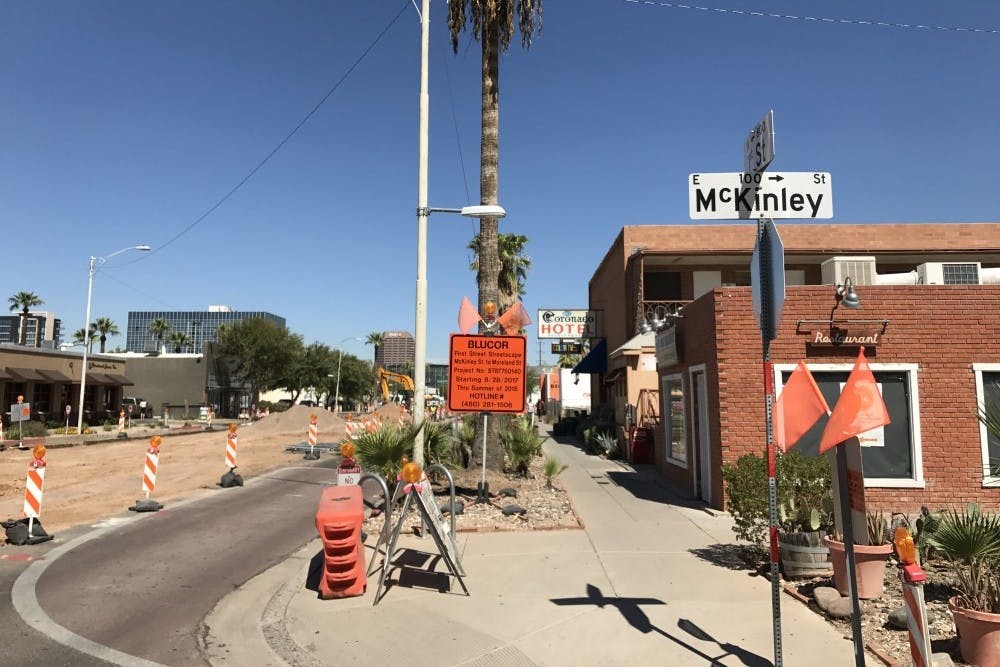Urban development is an ever-growing necessity that is nearly impossible without gentrification despite some of the cons that come with it.
ASU students living off campus in Tempe and downtown Phoenix may have a difficult time paying rent due to the recent urbanization of the areas over the past few years.
The new apartment complexes in both areas are extremely modernized and bring in a nice clientele, but they force rent prices to skyrocket and displace all of the locals who can no longer afford to live there.
On April 20, 2017, Phoenix City Council and Valley Metro moved forward with a $50 million arrangement to expand the light rail track five miles south down Central Avenue.
Areas along light rail stops have grown exponentially and are making a large profit, and south Phoenix could be the next big place to live in the housing market.
Since the initial grand-opening of the light rail on Dec. 27, 2008, the light rail has united two of ASU’s major campuses and added convenient stops all throughout west Mesa to south Glendale.
Due to the reduced fare for college students, many do not feel the need to have a car and instead choose to live near the light rail.
An impact that many did not see coming was how influential the light rail would be on the housing market.
The light rail opened the same year as the housing market crashed, and many were skeptical about whether the efforts of the Sustainable Communities Collaborative to revitalize development projects along the light rail tracks would be successful.
“A lot of college students are interested in these new up and coming developments," East Valley-based real estate agent, Jaime Blikre said. "You find people want to be in a community and people want to be in a fixer-upper community. If they have the capital then they are moving into some of the modern and nicer developments.”
Eight years after the housing market crash, Phoenix was named one of the best places to live in America.
The stark shift between the recent urbanization of the downtown area with the sudden appearance of high-rise buildings amongst the old unkempt bungalows is something no one can miss.
With a rent increase of 5 percent in 2016, one might assume locals are unhappy about the gentrification of downtown Phoenix.
The massive influx of people may seem good for commercial industries, but local businesses are struggling to keep up with the excessive rent. This allows more commercial industries to move in and buy up the property running out local businesses.
Another pressing issue in the downtown community is to maintain and preserve the city’s beloved art district.
Better known as Roosevelt Row, the city’s walkable art gallery, close to the Downtown Phoenix campus, starts at 7th Avenue and goes down to 16th Street along Roosevelt Street. The walkable stretch contains galleries, dining options and shops.
The Arts District is no stranger to gentrification and urbanization. ASU has recently built off-campus student housing right in the middle of the popular downtown art scene, and other commercial industries are not far behind.
Locals are trying to shut out any further development of commercial industries in this area, but the pattern is clear that when urban development happens, gentrification is close behind.
For ASU students, there are varying pros and cons to gentrification; the development is a necessity to meet the demands of students moving downtown and to promote the convenience and accessibility of the light rail. However, the drawbacks are the unaffordable rent and loss of authenticity to the city.
Ultimately, while gentrification and urbanization might skyrocket the cost of living, it is necessary to meet the demands of a rising city.
Reach the columnist at hncumber@asu.edu or follow @hncumber on Twitter.
Editor’s note: The opinions presented in this column are the author’s and do not imply any endorsement from The State Press or its editors. Want to join the conversation?
Send an email to opiniondesk.statepress@gmail.com. Keep letters under 500 words and be sure to include your university affiliation. Anonymity will not be granted. Like The State Press on Facebook and follow @statepress on Twitter.




